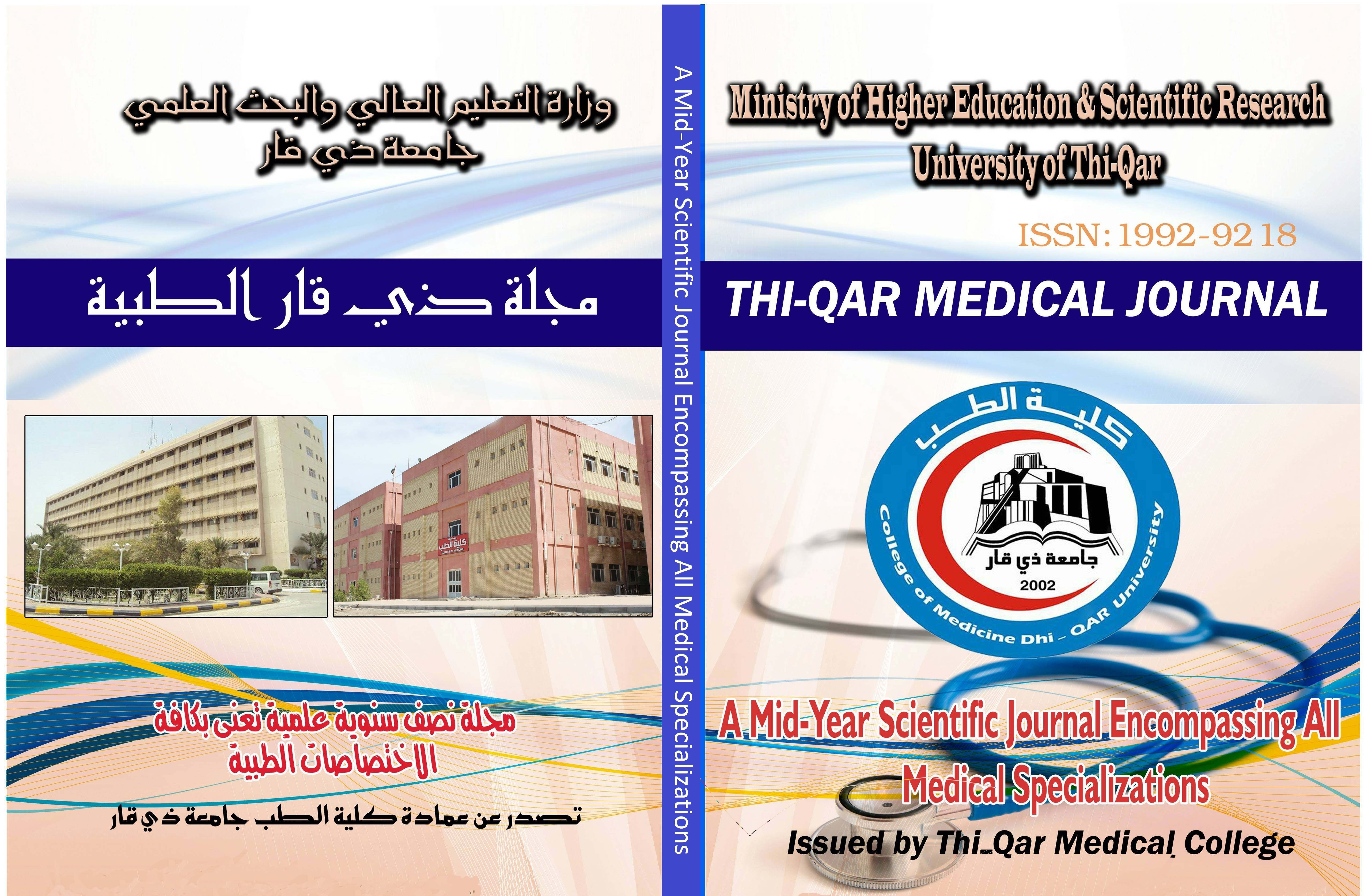Abstract
BACKGROUND: A Retrospective
study of 31 patients who diagnosed as a case
of primary pulmonary hypertension (PPH) in
Ibn-Albitar hospital for cardiac surgery, from
July 1999 to April 2007, to study the clinical
pattern of PPH in children and adult, who
diagnosed as acase of PPH clinically and
echocardiographically and confirmed by
diagnostic cardiac catheterization. Patient
and Method: This study excluded cases of
secondary
PAH and those without
catheterization. Two cases excluded from
PPH cases (one patent ductus arteriosus
eisenminger`s syndrome and other is large
sinus venosus atrial septal defect). These data
were collected from medical files or
catheterization files, including:(age, gender,
duration of symptoms before reaching
diagnosis of PPH, number of hospital
admissions, signs, and symptoms of PPH,
echocardiographic
findings),
considering
pediatric age group ≤ 18year and adult
>18year, and the catheterization data were:
way of reaching final diagnosis in
catheterization, severity of PAH and mean of
MRAP, MPAP) also morbidity and mortality.
Conclusions :the pediatric cases tend to
present earlier than adult cases, Females cases
more than males cases. The duration of
symptoms before catheterization was short,
and it was shorter in adult cases. The most
common symptoms in pediatrics are(cyanosis,
fatigability, and extensional dyspnea), while
in adult (exertional dyspnea, chest pain and
fatigability).The
most common signs in
pediatrics are (normal physical examination,
loud second heart sound and murmur)while in
adult (murmur, dyspnea, loud second heart
sound). The catheterization approach to reach
definite diagnosis in most pediatrics (by
normal pulmonary capillary wedge pressure)
while in adult (by exclusion secondary
causes). Recommendations: atrial septal
defect-sinus venosus should be considered in
exclusion list of secondary PAH, familial
cases need genetic analysis, loud second heart
sound is important clue for PPH, especially if
associated
with
dyspnea on exertion.
Pregnancy still wanted by certain families,
and counseling for patients and their families
regarding risk of pregnancy is essential.
study of 31 patients who diagnosed as a case
of primary pulmonary hypertension (PPH) in
Ibn-Albitar hospital for cardiac surgery, from
July 1999 to April 2007, to study the clinical
pattern of PPH in children and adult, who
diagnosed as acase of PPH clinically and
echocardiographically and confirmed by
diagnostic cardiac catheterization. Patient
and Method: This study excluded cases of
secondary
PAH and those without
catheterization. Two cases excluded from
PPH cases (one patent ductus arteriosus
eisenminger`s syndrome and other is large
sinus venosus atrial septal defect). These data
were collected from medical files or
catheterization files, including:(age, gender,
duration of symptoms before reaching
diagnosis of PPH, number of hospital
admissions, signs, and symptoms of PPH,
echocardiographic
findings),
considering
pediatric age group ≤ 18year and adult
>18year, and the catheterization data were:
way of reaching final diagnosis in
catheterization, severity of PAH and mean of
MRAP, MPAP) also morbidity and mortality.
Conclusions :the pediatric cases tend to
present earlier than adult cases, Females cases
more than males cases. The duration of
symptoms before catheterization was short,
and it was shorter in adult cases. The most
common symptoms in pediatrics are(cyanosis,
fatigability, and extensional dyspnea), while
in adult (exertional dyspnea, chest pain and
fatigability).The
most common signs in
pediatrics are (normal physical examination,
loud second heart sound and murmur)while in
adult (murmur, dyspnea, loud second heart
sound). The catheterization approach to reach
definite diagnosis in most pediatrics (by
normal pulmonary capillary wedge pressure)
while in adult (by exclusion secondary
causes). Recommendations: atrial septal
defect-sinus venosus should be considered in
exclusion list of secondary PAH, familial
cases need genetic analysis, loud second heart
sound is important clue for PPH, especially if
associated
with
dyspnea on exertion.
Pregnancy still wanted by certain families,
and counseling for patients and their families
regarding risk of pregnancy is essential.
